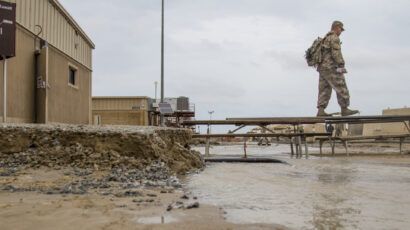Robot to the rescue
By Gill A. Pratt | January 1, 2014
The 2011 disaster at the Fukushima Daiichi Nuclear Power Plant highlighted the promise and shortcomings of robots. Had robots been able to quickly enter the plant and vent accumulated hydrogen, a meltdown could have been averted, but training requirements and technology limitations delayed their deployment. The US Defense Advanced Research Projects Agency launched the DARPA Robotics Challenge to catalyze development of semi-autonomous robots capable of operating in dangerous, degraded environments so society is prepared to respond to future disasters. The challenge brings together robotics systems and software experts from around the world in a series of competitions to overcome technological obstacles related to robotic mobility, manipulation, perception, human–robot interface, and actuation. Over a period of less than three years, DARPA expects the field of robotics to undergo a historic transformation that could drive innovation in robots for defense, health care, agriculture, and industry. DARPA outlines its objectives for the challenge, addresses the ethics and present realities of robotics, and charts the development path to capable, cost-effective systems.
Together, we make the world safer.
The Bulletin elevates expert voices above the noise. But as an independent nonprofit organization, our operations depend on the support of readers like you. Help us continue to deliver quality journalism that holds leaders accountable. Your support of our work at any level is important. In return, we promise our coverage will be understandable, influential, vigilant, solution-oriented, and fair-minded. Together we can make a difference.
Issue: Bulletin of the Atomic Scientists Volume 70 Issue 1
Keywords: DARPA, Fukushima, autonomy, defense, disaster, innovation, interface, robotics
Topics: Uncategorized















